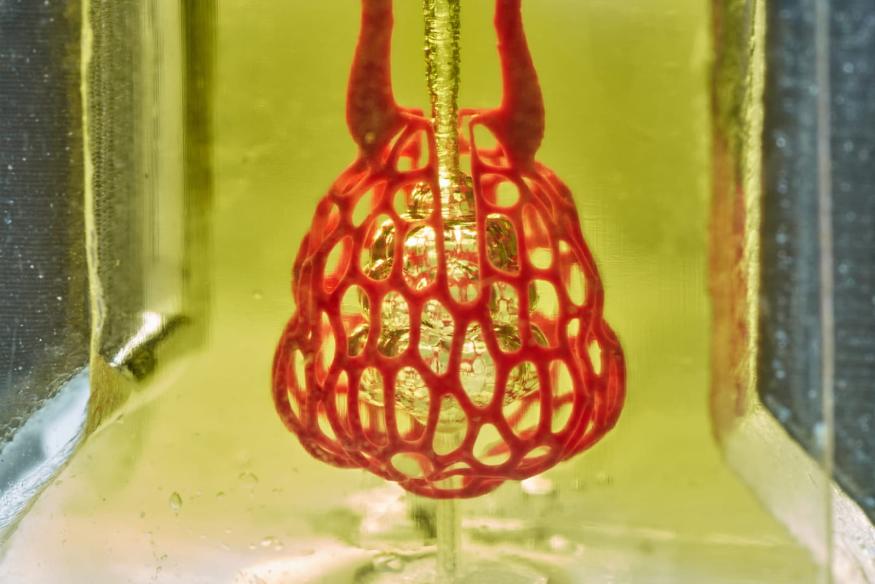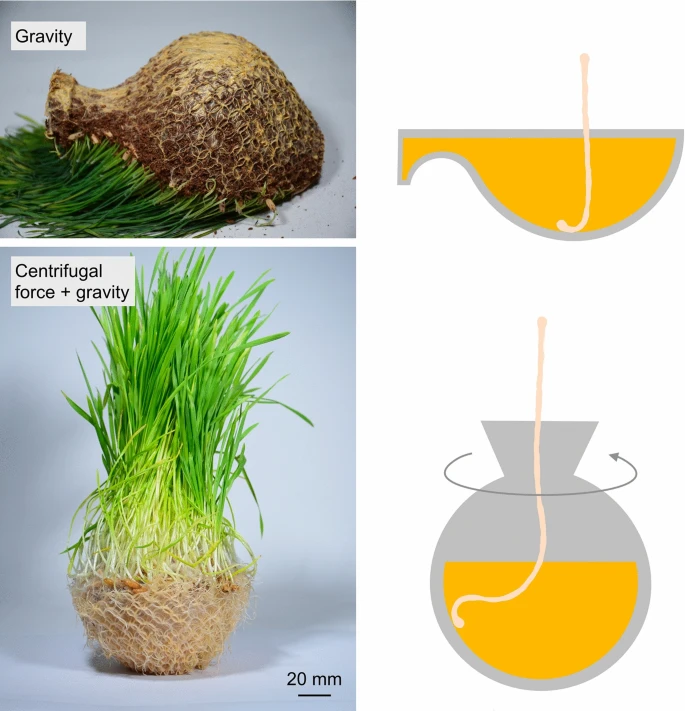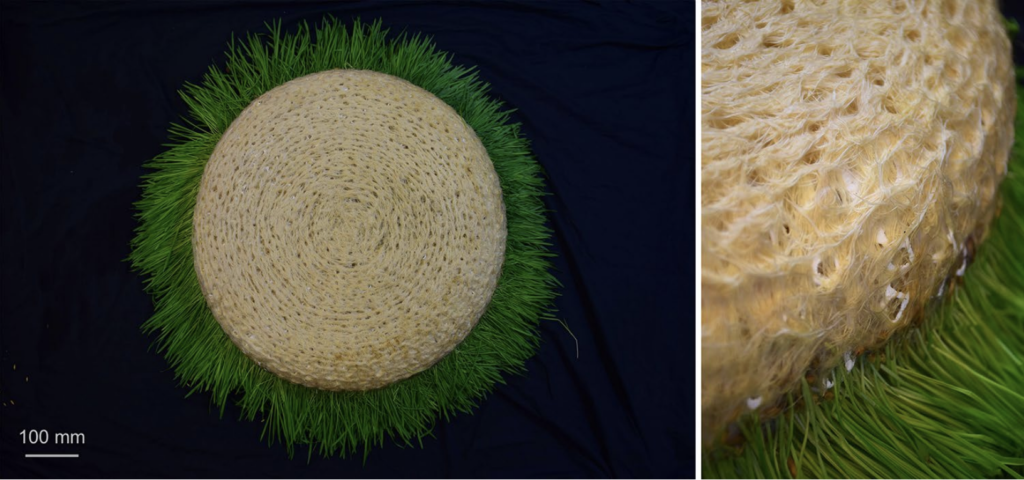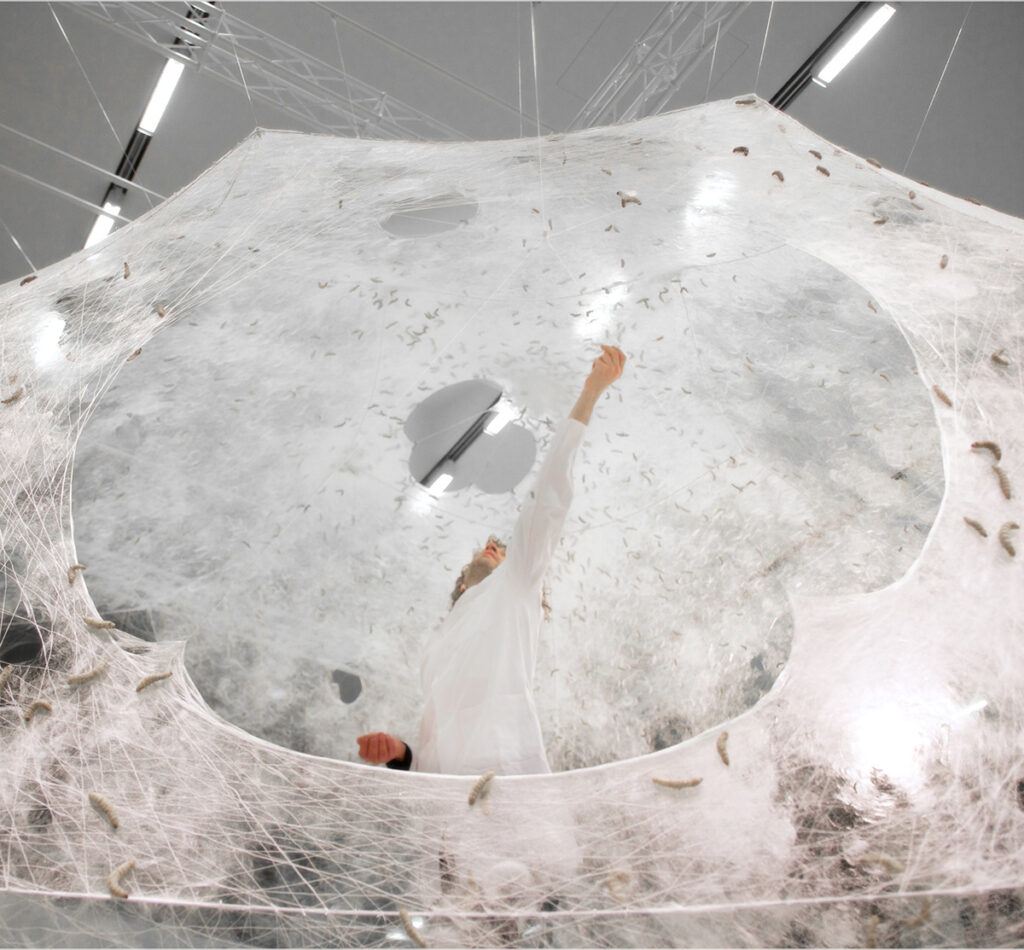
Nature is the original fabricator, it is able to create complexity in design, function, and beauty at a molecular level. Digital Biofabrication combines technology with organisms that humans can work in kin with such as plants, animals, moss, fungi, and bacteria. Through this exploration working in tandem with nature researchers and artists have been able to make strides in the medical field as well as art and design.
3D PRINTING FUNCTIONAL ORGANS AND TISSUES
3D bioprinting has become a method for engineering functional tissues and organs by adding layer after layer of cells and biochemical components/materials. Recent advances have led to more functionality and accuracy in recreating the intricacies of organs. Through microfabrication techniques cells are arranged in predefined 2D and 3D planes to build up tissues and organs.

Jordan Miller of Rice University and his team have been able to create 3D printed vascular networks and intravascular features. Using a method they created named SLATE (stereolithography apparatus for tissue engineering) they were able to make a lung recreated in hydrogel, “Tests of the lung-mimicking structure showed that the tissues were sturdy enough to avoid bursting during blood flow and pulsatile “breathing,” a rhythmic intake and outflow of air that simulated the pressures and frequencies of human breathing”. Miller has ensured that all of the data from the research is open source as well as the 3D Printing files, bringing accessibility to the technology that will lead us to more easily obtained organ and tissue transplants.
“The ability of plants to respond to the changes in the environment has inspired scholars to incorporate them in sensing devices, information outputs and self-nurturing systems” –Diana Scherer

DIGITAL BIOFABRICATION AND ROOT STRUCTURES
Diana Scherer in tandem with Jiwei Zhou, Bahar Barati, Jun Wu and Elvin Karana at Material Experience Lab in Faculty Industrial Design Engineering at the Delft University of Technology, created digitally fabricated templates resembling honeycomb structures for roots to grow, that guided the roots into vessel forms. These roots and templates lean on one another for support, and through centrifugal force provide one another with stability.

Root behaviors when they are influenced by centrifugal force.
Scherer and the team created 3d forms by mapping root behavior as well as testing growing conditions and substrates. This led them to 3D printing beads with polylactic acid, a bioplastic that would be compatible with root material that guided the roots into place. These were placed in porous molds filled with agar and fertilized, the plants formed into complex patterns and resulted in secure root adhesion in the 3D plane. This research opens up possibilities for more widespread usage of biomaterials in the product design space.

SILK PAVILION
Working in kin with other organisms is a component of Digital Biofabrication. Neri Oxman worked with researchers at MIT Media Lab’s Mediated Matter group to design the Silk Pavilion, a dome made from silk fibers woven by a robotic arm, and finished by silkworms. Each process supports the other in the strength, design, and fabrication. The silkworms were responsible for mixing the chemical components of this piece, “sericin is the matrix, the glue, and the fibroin is the fiber that defines or gives the structure its structural stability and orientation”.
When spinning their cocoon the silkworms create a kilometer long silk filament, a soft, nurturing, yet protective fiber. The piece questions our role in collaboration with silk worms; typically in the silk industry the worms are killed in the process of collecting their cocoons.
Silk Pavilion is unique in its process of allowing the silkworms to knit these fibers freely, and survive the process. The piece represents a worlds of art and design where nature and technology are treated with mutual respect and care for well being.

“Material Ecology, which considers computation, fabrication, and the material itself as inseparable dimensions of design. In this approach, products and buildings are biologically informed and digitally engineered by, with and for, Nature” – Neri Oxman

IN SUMMARY
Our place in the world cannot be considered separate from nature, humankind is intimately connected to the earth, no different from our animal, bacterial, or plant counterparts. When disconnected from these larger systems, we ignore the implicit intelligent design of nature and our own bodies. By integrating the wisdom of other organisms into our design, we can create more sustainable and effective methods of fabrication.
SOURCES
https://doi.org/10.1007/s42242-020-00088-2
https://www.dezeen.com/2013/06/03/silkworms-and-robot-work-together-to-weave-silk-pavilion/
https://pubmed.ncbi.nlm.nih.gov/30558445/
https://www.sciencedirect.com/science/article/pii/S2772665722000010
https://news.rice.edu/news/2019/organ-bioprinting-gets-breath-fresh-air